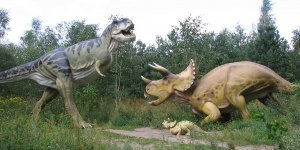Space News
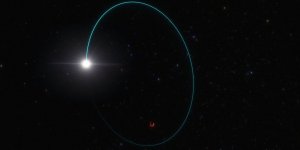
Astronomers have identified the most massive stellar black hole yet discovered in the Milky Way galaxy. »
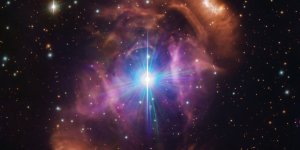
When astronomers looked at a stellar pair at the heart of a stunning cloud of gas and dust, they were in for a surprise. Star pairs are typically very similar, like twins, but in HD 148937, one star appears younger and, unlike the other, is magnetic. »
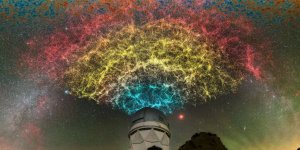
Using first-year data from the Dark Energy Spectroscopic Instrument Survey, researchers have reported new measurements of dark energy and its effect on the expanding universe. »

NASA’s LRO (Lunar Reconnaissance Orbiter), which has been circling and studying the Moon for 15 years, captured several images of Korea Aerospace Research Institute’s Danuri lunar orbiter last month. The two spacecraft, traveling in nearly parallel orbits, zipped past each other in opposite directions between March 5 and 6, 2024. »

By measuring the rotation periods of hundreds of thousands of stars, NASA’s Nancy Grace Roman Space Telescope promises to bring new understandings of stellar populations in our Milky Way galaxy after it launches by May 2027. »

The 24th sample taken by the six-wheeled scientist offers new clues about Jezero Crater and the lake it may have once held. »

Astronomers have found three previously unknown moons in our solar system — two additional moons circling Neptune and one around Uranus. »

At least one in a dozen stars show evidence of planetary ingestion. »
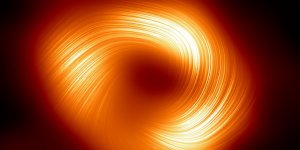
A new image from the Event Horizon Telescope (EHT) collaboration has uncovered strong and organised magnetic fields spiraling from the edge of the supermassive black hole Sagittarius A* (Sgr A*). »

Jets emerge from the cocoon of a newly forming star to blast across space, slicing through the gas and dust of a shining nebula in this new image from NASA’s Hubble Space Telescope. »

It takes two to tango, but in the case of brown dwarfs that were once paired as binary systems, that relationship doesn't last for very long, according to a recent survey from NASA's Hubble Space Telescope. »

A NASA-funded team of scientists has discovered long-lasting radio signals emanating from the Sun that are similar to those associated with auroras – northern and southern lights – on Earth. »

After NASA’s historic Double Asteroid Redirection Test, a JPL-led study has shown that the shape of asteroid Dimorphos has changed and its orbit has shrunk. »

An international team of astronomers used Webb’s MIRI (Mid-Infrared Instrument) to identify a variety of icy compounds made up of complex organic molecules like ethanol (alcohol) and likely acetic acid (an ingredient in vinegar). »

Two giant planets comparable to our own system’s Saturn orbit a star not unlike our Sun some 700 light-years away. »

April 17, 2021, was a day like any other day on the Sun, until a brilliant flash erupted and an enormous cloud of solar material billowed away from our star. »

The ice-covered Jovian moon generates 1,000 tons of oxygen every 24 hours – enough to keep a million humans breathing for a day. »

Researchers have found water vapour in the disc around a young star exactly where planets may be forming. »

A glowing cosmic cloud has revealed a cataclysmic collision. »

When a star like our Sun reaches the end of its life, it can ingest the surrounding planets and asteroids that were born with it. »

Using the European Southern Observatory’s (ESO) Very Large Telescope (VLT), astronomers have characterised a bright quasar, finding it to be not only the brightest of its kind, but also the most luminous object ever observed. »

Researchers are studying data from a recent suborbital flight test to better understand lunar regolith, or Moon dust, and its potentially damaging effects as NASA prepares to send astronauts back to the lunar surface under the Artemis campaign. »

Using two of the agency’s X-ray telescopes, researchers were able to zoom in on a dead star’s erratic behavior as it released a bright, brief burst of radio waves. »

A “super-Earth” ripe for further investigation orbits a small, reddish star that is, by astronomical standards, fairly close to us – only 137 light-years away. The same system also might harbor a second, Earth-sized planet. »

Planet more than 13 times as massive as Earth orbits the 'ultracool' star LHS 3154. »

On Jan. 19, 2024, at 10:20 a.m. EST, the JAXA (Japan Aerospace Exploration Agency) Smart Lander for Investigating Moon (SLIM) landed on the lunar surface. »

Researchers have discovered the oldest black hole ever observed, dating from the dawn of the universe, and found that it is ‘eating’ its host galaxy to death. »

Researchers at NASA’s Goddard Space Flight Center in Greenbelt, Maryland, have discovered X-ray activity that sheds light on the evolution of galaxies. »

Infrared emission from methane suggests atmospheric heating by auroral processes. »

Researchers may have identified the missing component in the chemistry of the Venusian clouds that would explain their colour and 'splotchiness' in the UV range, solving a longstanding mystery. »

Astronomers have found a direct link between the explosive deaths of massive stars and the formation of the most compact and enigmatic objects in the Universe — black holes and neutron stars. »

By combining several years of observations from NASA's Hubble Space Telescope along with conducting computer modelling, astronomers have found evidence for massive cyclones and other dynamic weather activity swirling on a hot, Jupiter-sized planet 880 light-years away. »

Carrying NASA scientific instruments as part of its Commercial Lunar Payload Services initiative, Astrobotic’s Peregrine lander launched on United Launch Alliance’s (ULA) Vulcan rocket at 2:18 a.m. EST from Launch Complex 41 at Cape Canaveral Space Force Station in Florida. »
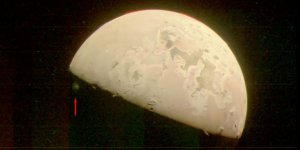
The orbiter has performed 56 flybys of Jupiter and documented close encounters with three of the gas giant’s four largest moons. »

The so-called Running Chicken Nebula, home to young stars in the making, is revealed in spectacular detail in this 1.5-billion-pixel image captured by the VLT Survey Telescope (VST), hosted at ESO’s Paranal site in Chile. »

